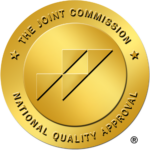Understanding Cocaine Abuse by Age Group: Key Statistics
Cocaine abuse remains a significant public health concern in the United States, affecting individuals across a wide range of age groups. While its use has fluctuated over the years, cocaine continues to pose serious risks to physical and mental health, and understanding its prevalence by age can shed light on the populations most in need of intervention. At Freedom Detox & Recovery Center in North Carolina, we are committed to raising awareness about cocaine use and providing the support necessary for recovery.
Cocaine Use Statistics by Age Group
Cocaine is most commonly abused by young adults, but its reach extends to teenagers, middle-aged adults, and even older populations. According to data from the National Survey on Drug Use and Health (NSDUH) and the Centers for Disease Control and Prevention (CDC), the following patterns have emerged:
- Young Adults (Ages 18–25)
- Prevalence: Cocaine use is highest among young adults, with approximately 1 in 20 reporting use in the past year.
- Reasons for Use: Young adults often cite curiosity, peer pressure and the desire to enhance social experiences as reasons for trying cocaine.
- Risks: This age group faces increased risks of developing addiction due to the brain’s ongoing development, making them more susceptible to the long-term effects of cocaine.
- Adults (Ages 26–34)
- Prevalence: Cocaine use among individuals in this age group remains significant, with many users carrying habits formed during their younger years into adulthood.
- Challenges: This age group often experiences stress from career pressures, relationships or financial responsibilities, which may drive substance use.
- Teenagers (Ages 12–17)
- Prevalence: Cocaine use among teens is less common than in older age groups, but early exposure to drugs poses significant risks for future addiction.
- Risk Factors: Peer influence, lack of supervision and exposure to environments where drug use is normalized are common factors contributing to teen cocaine use.
- Middle-Aged Adults (Ages 35–49)
- Prevalence: While cocaine use declines after young adulthood, a substantial number of middle-aged adults continue to struggle with cocaine addiction.
- Trends: Some in this group may have used cocaine recreationally in their youth and developed long-term dependencies.
- Health Risks: Prolonged use increases the likelihood of severe health complications, including heart attacks and strokes.
- Older Adults (Ages 50 and Up)
- Prevalence: Cocaine use is less common in older adults, but it does occur, particularly among those with a history of long-term substance use.
- Concerns: For this age group, the physical toll of cocaine is particularly dangerous, exacerbating age-related health issues.
The Importance of Intervention
Understanding which age groups are most affected by cocaine use highlights the need for targeted prevention and treatment strategies. Each age group faces unique challenges, but the consequences of cocaine abuse—such as addiction, physical health complications and mental health struggles—are universal.
How Freedom Detox & Recovery Center Can Help
At Freedom Detox & Recovery Center in North Carolina, we provide comprehensive, medically supervised detox services to help individuals safely begin their journey to recovery. Our compassionate team offers personalized care, addressing not only the physical symptoms of withdrawal but also the emotional and psychological aspects of addiction.
By focusing on evidence-based treatments and long-term support, we help individuals from all age groups break free from the cycle of addiction and reclaim their lives.
Take the First Step Today
Cocaine addiction can affect anyone, regardless of age. If you or a loved one is struggling with cocaine use, reach out to Freedom Detox & Recovery Center in North Carolina. Recovery is possible, and we’re here to guide you every step of the way.





